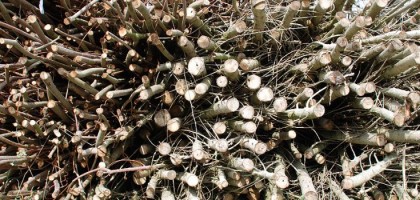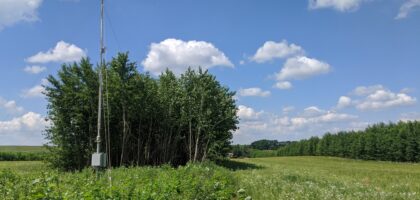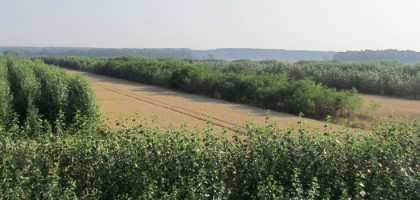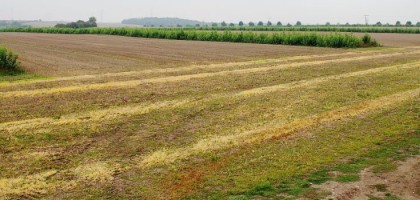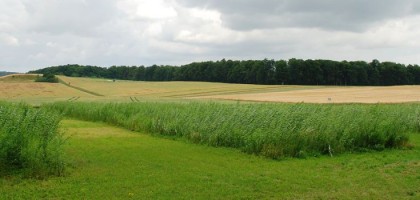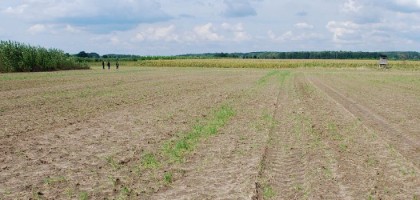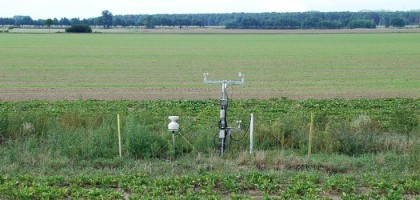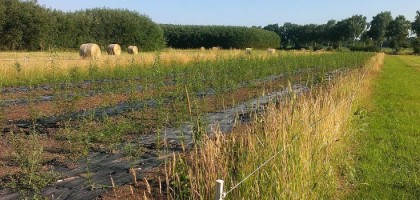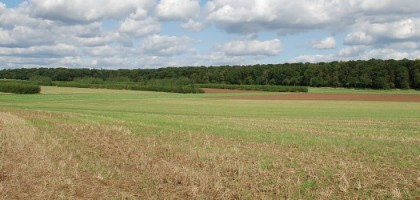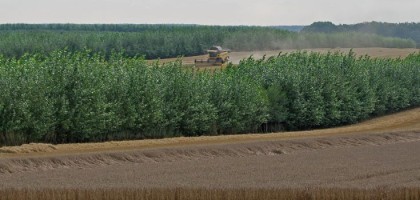TP 4: Microclimate, water stress and yield
Summary
Tree rows in temperate alley cropping systems can improve microclimatic conditions on adjacent crop alleys and can have a beneficial effect on crop transpiration and soil evaporation, which in turn can increase the availability of water for the crop. Water availability is a limiting factor for crop production and is as such highly relevant for site productivity; improved microclimatic conditions can thus also have a positive effect on crop yields.
However, results from the second phase of SIGNAL indicated that there is a zone of reduced crop yields in close proximity to the tree rows. It is not clear yet whether this zone of reduced yields is due to competition for light or for water between the tree and the crop component. The aim of subproject 4 in the third project phase is thus to assess the underlying reasons for local yield variations in alley cropping systems and to quantify possible interactions between the competition for water and the competition for light at the field margins close to the tree rows. For this purpose, a strip of fibre nettle (Urtica dioica L. convar. fibra) will be installed in the alley cropping system in Forst/L. at the field margins close to the tree rows in order to determine whether the establishment of a shade-tolerant permanent crop can optimise the existing agroforestry system with respect to the factor light competition. At the same time, several indicators for plant water stress such as water content, water potential and canopy temperature will be measured to examine whether yield reductions at the field margin are a result of competition for soil water reserves between crops and tree strips. Further, microclimate measurements with high spatial and temporal resolution as well as small-scale measurements of crop yields in the well-established as well as in the new multi-component system will round out the quantification and assessment of interactions between light and water competition in alley-cropping systems.
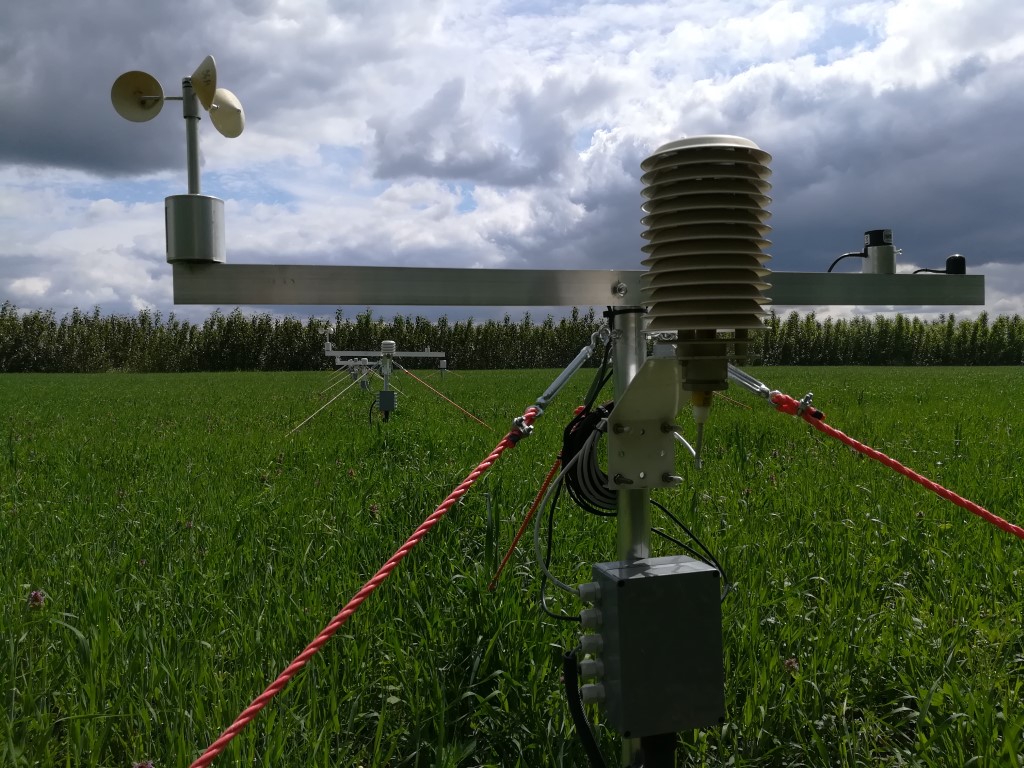
Pictures:
(1) Infrared radiometer (Mittel)
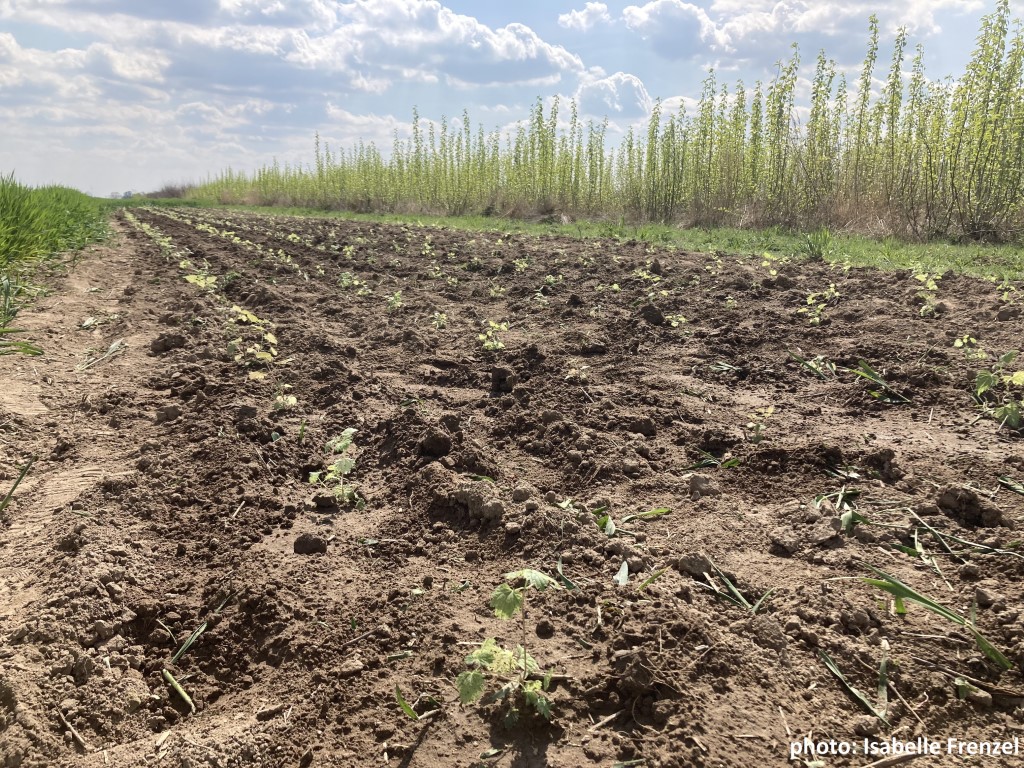
(2) Fibre nettle strip shortly after planting (Mittel)
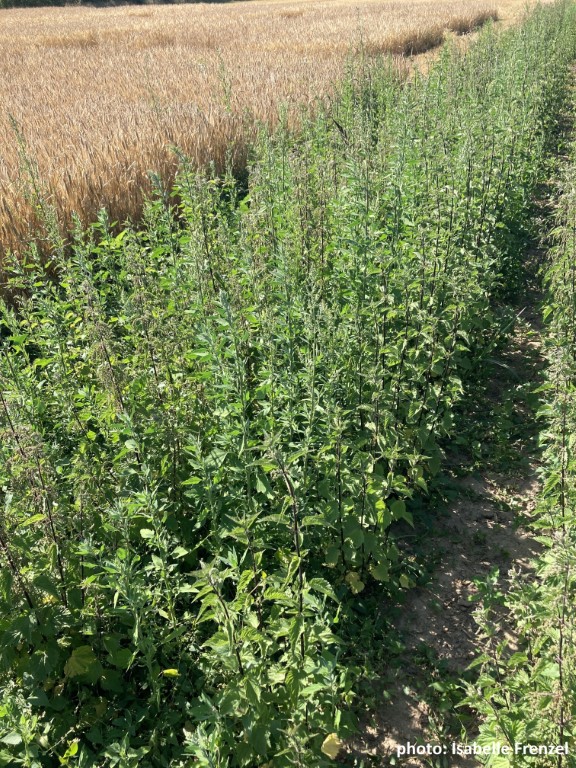
(3) Fibre nettle strip (Mittel)
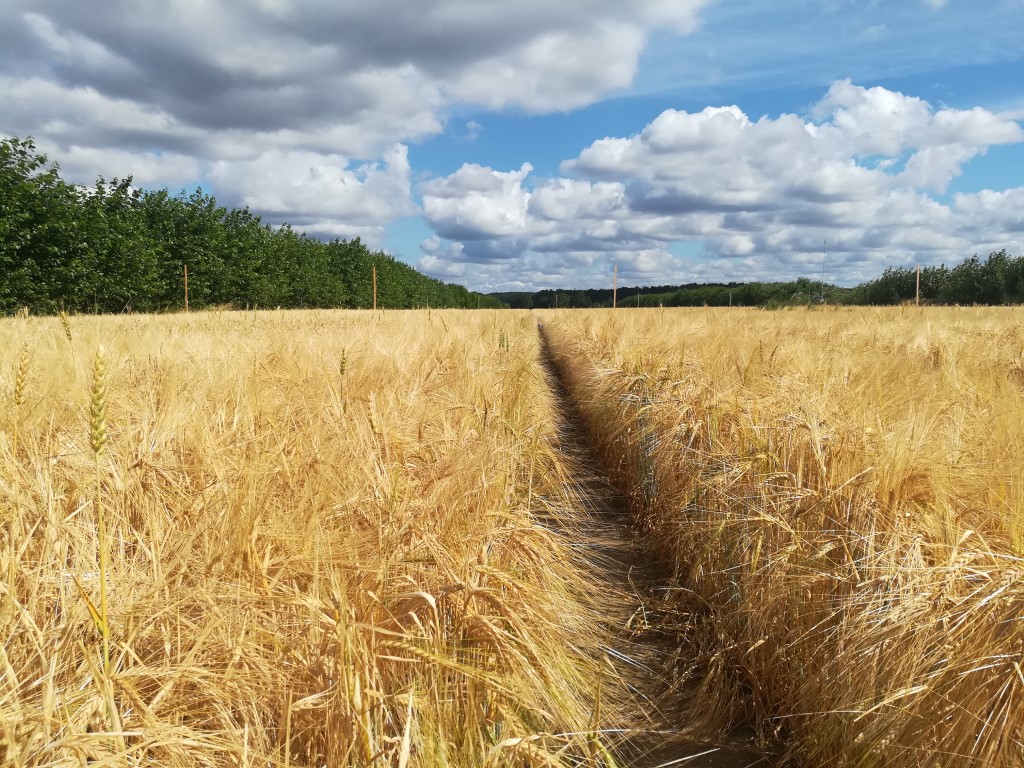
(4) Agroforestry site in Forst shortly before harvest
